
- The most beautiful common species;
- Oxalis enneaphylla;
- Oxalis adenophylla;
- Oxalis acetosella;
- Oxalis versicolor;
- Oxalis triangularis;
- Oxalis articulata, syn. Oxalis rubra;
- Oxalis tetraphylla, syn. Oxalis deppei;
- Nuances of growing decorative non-aggressive Oxalis;
- Accommodation in the country;
- Oxalis-malicious weeds;
- Oxalis dillenii;
- Oxalis stricta;
- Oxalis corniculata;
All Oxalis have an inexplicable charm. They have long and firmly occupied a place in the line of the best garden plants in the world. Their green or dark red leaves and delicate white, pink, yellow flowers captivate a kind of beauty. There are about 500 species in the genus Oxalis from the family Oxalidaceae of the same name. And not all members of this family can be invited to your garden.
The fascinating shapes and colors of the flowers and leaves allowed Oxalis to become the undisputed stars in mixborders with a lack of light. Some species are favorite pot crops.
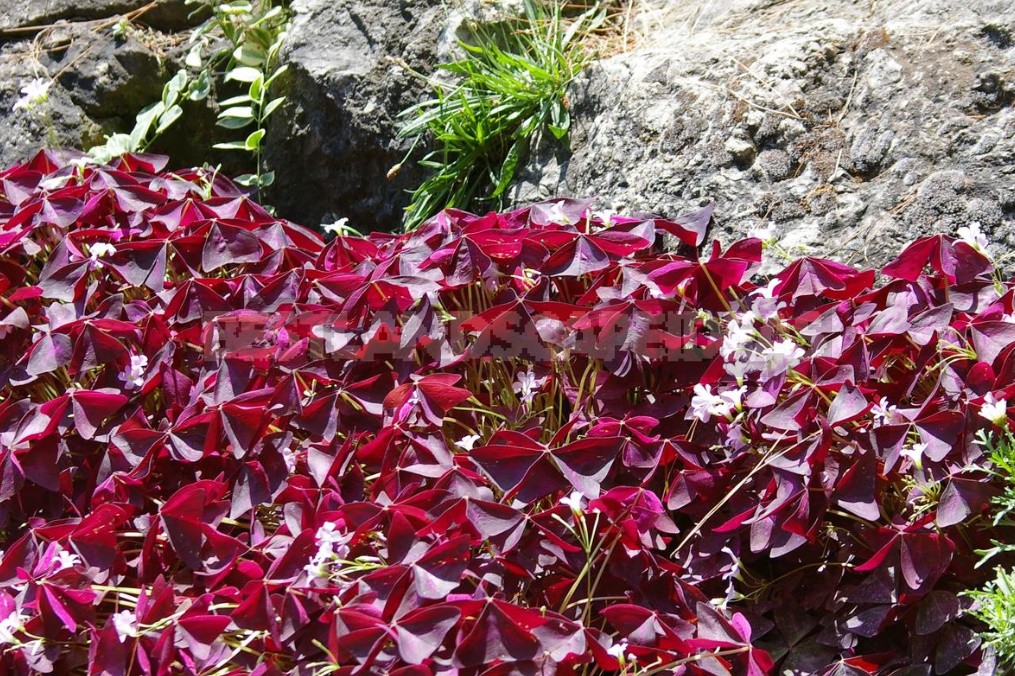
However, looking at the delicate leaves and flowers of charming Oxalis, no one can think that they are malicious aggressive weeds, which are very difficult to get rid of. But many brought them to the site of their own free will, deceived by the meek charming appearance of plants. So that no one will lose in the future, let’s take a closer look at Oxalis.
The most beautiful common species
They are impeccable: beautiful, diverse and unpretentious.
Oxalis enneaphylla
A cushion-shaped perennial 8 cm high and 15 cm wide. Originally from Patagonia, the Falkland Islands.

The leaves are bluish-gray, with 9-20 narrowly oblong, like pleated leaves 2 cm long. Flowers are solitary, fragrant, from white to dark red-pink,2-2. 5 cm in diameter; they bloom in late spring and early summer.
Decorative varieties
- ‘Minutifolia’ (compact, 5 cm high, 10 cm wide; leaves up to 1 cm long, white flowers);
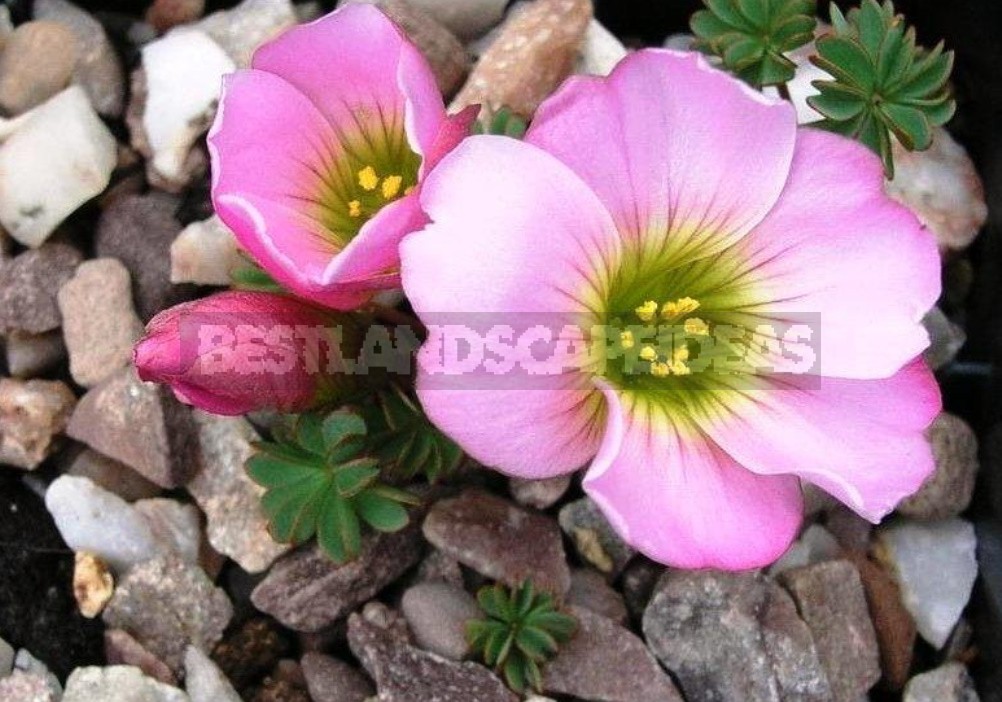
- ‘Rosea’ (purple-pink flowers).

Critical winter minimum -15°C, needs organic mulching in the first 3 years after planting.
Oxalis adenophylla
A very beautiful view, forming dense gray-green pillows, decorated with purple-pink flowers during flowering. It is native to the Andes, Chile, and Argentina.

In height, the plants reach 10 cm, in width-15 cm. The leaves consist of 9-22 narrow obovate leaflets 2 cm long. The flowers are small, 2 cm in diameter, and bloom in late spring.
This Oxalis is hardy: the critical winter minimum is -15°C. in the middle zone, especially in the first years after planting, it needs to be sheltered for the winter. Looks great in a rock garden.
This is interesting: Oxalis folds leaves after dark, in inclement weather, and sometimes in the heat.
Oxalis acetosella
It is well known to many summer residents. This is a perennial herbaceous stemless plant with a branched creeping rhizome, at the end of which leafless flowering shoots develop 6-12 cm high. This frost-resistant species is often found in forests, in fresh cuttings throughout the European part.
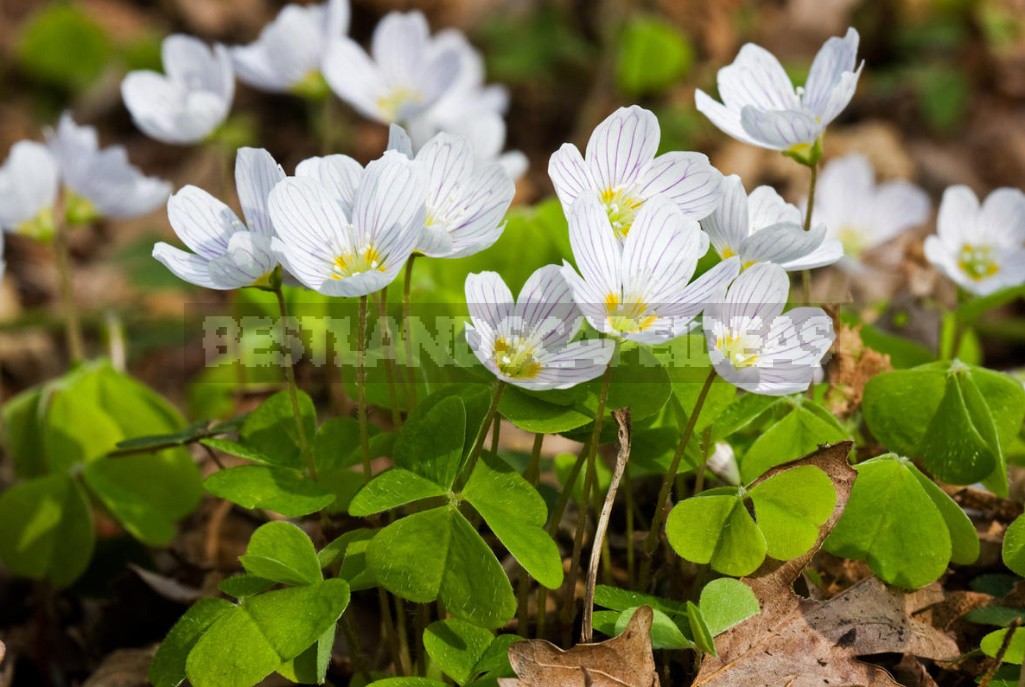
The leaves are long-stemmed, trifoliate, in bundles, and the leaflets are obovate. Flowers up to 3 cm in diameter, white, with pink or purple veins; bloom in may-June. Fruit-boxes; ripen in June-July.
This is an excellent ground cover plant for decorating shady places under trees. Decorative variety – ‘Purpurascens’ (pink flowers).
It is interesting. The original species is a wild food, medicinal, and ornamental plant.
Oxalis versicolor
A real beauty of a pillow-shaped shape, 8 cm high and 20 cm wide. This bulbous perennial is native to South Africa.

Unusually beautiful variegated flowers are single, 2-3 cm in diameter, reaching up. It is thermophilic: its critical winter minimum is only 0°C. Therefore, not only in the middle zone, but also in the South, it is desirable to use it for decorating vacation spots from may to October. Plant in wide, low garden pots-bowls in early spring.
Oxalis triangularis
Originally from South America. Especially effective during the period of abundant flowering: small pink-white flowers.
they look in contrast to the dark red triangular leaves.
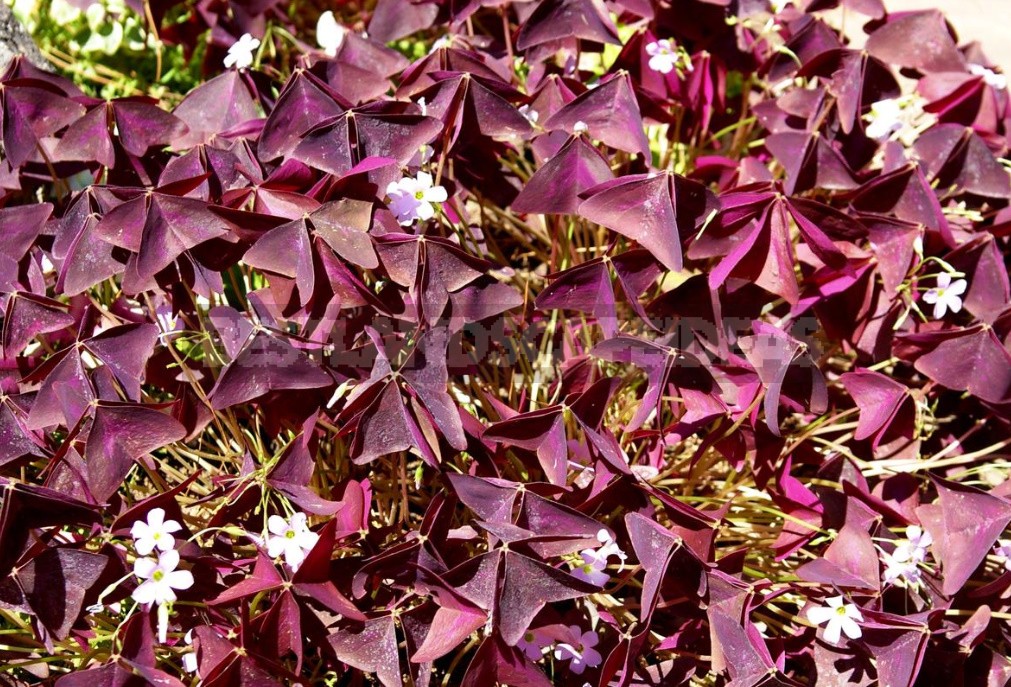
The leaves are large, green and maroon. An interesting white-flowered variety (Oxalis triangularis ssp. papilionaceae).
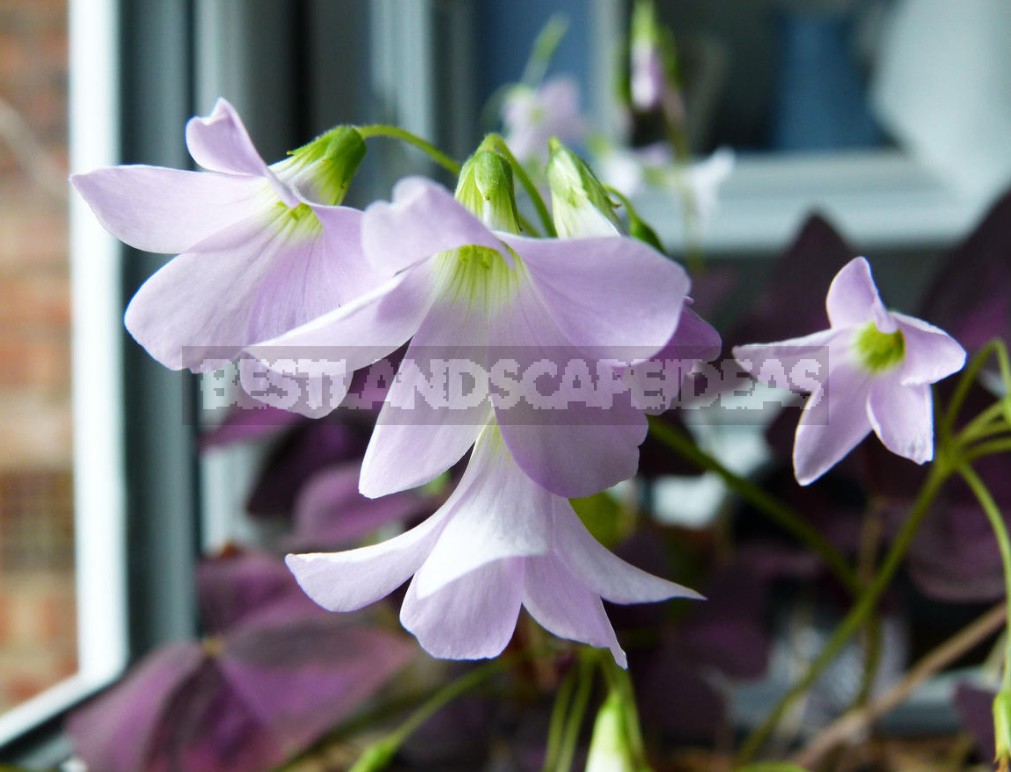
For many years, Oxalis triangularis has been growing in my cottage in the open ground. Safely winters under a light shelter of dry leaves.

In the middle lane, it is better to plant it in low pots-bowls.
Oxalis articulata, syn. Oxalis rubra
Very beautiful Oxalis, especially effective during the may flowering period. This perennial is native to the Eastern part of South America. In some Western European countries, it has become naturalized.
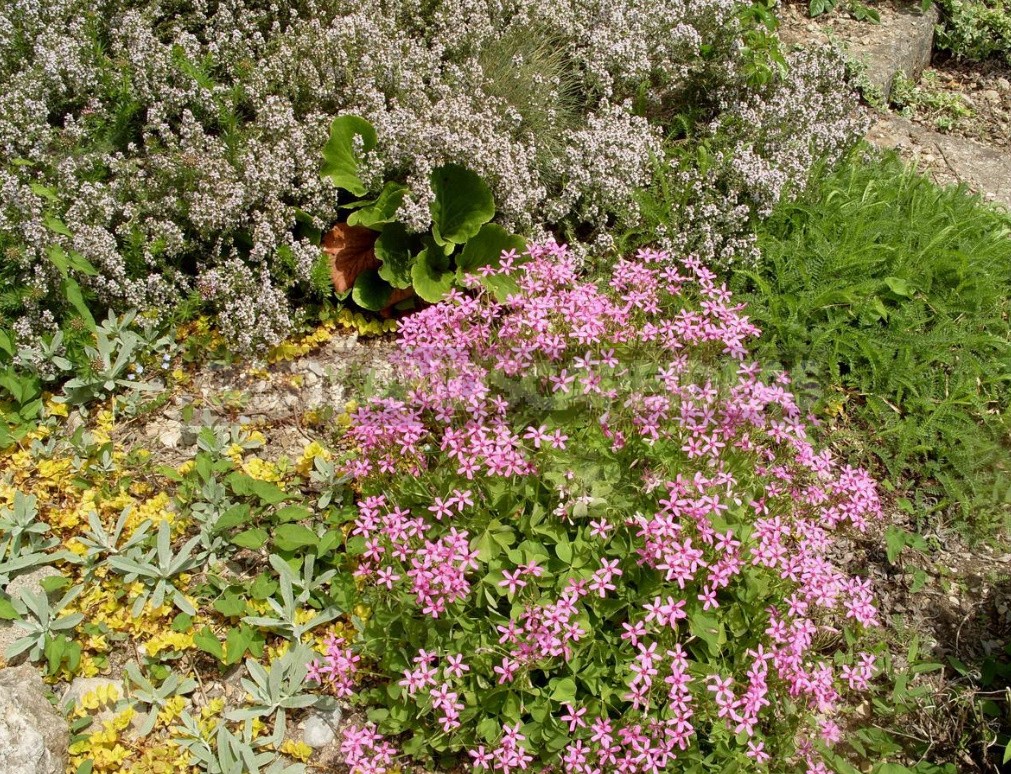
With a height of 15-30 cm, it forms a beautiful, elegant cushion. Leaves are trifoliate, heart-shaped leaflets, 2.5-3 cm long. The flowers are bright pink, small, collected in loose inflorescences, bloom in may.

Thermophilic. For many years, it grows in one place without loss of decorativeness. Likes semi-shady places. Responsive to fertilizing (at least one in the spring and summer with a full mineral fertilizer).
Oxalis tetraphylla, syn. Oxalis deppei
She is originally from Mexico. It is called the luck plant, the clover of happiness.
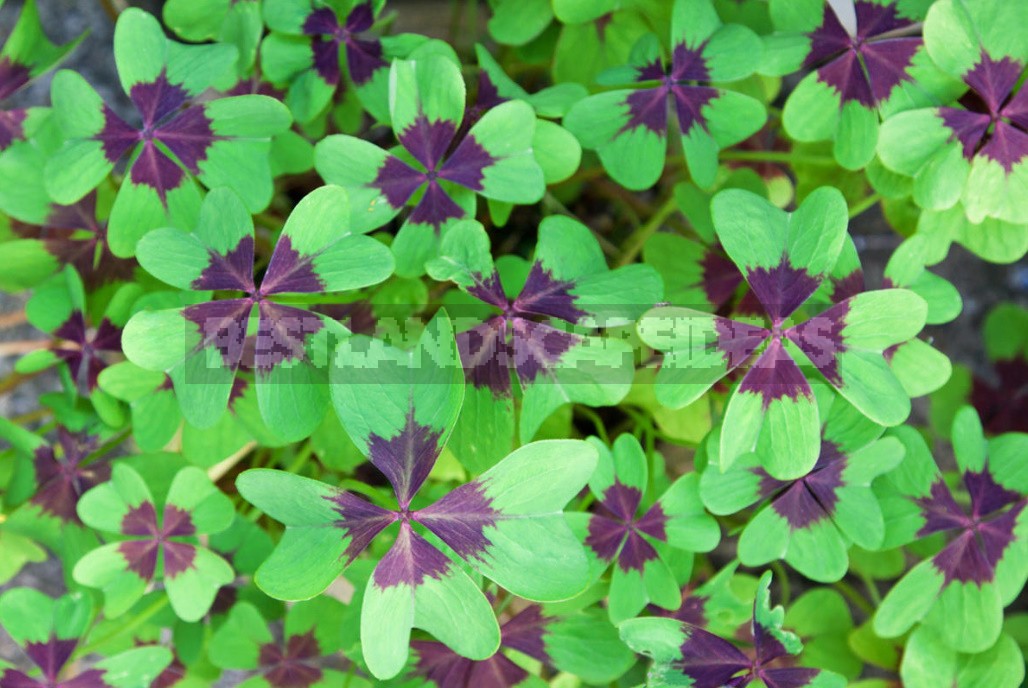
A cushion-shaped bulbous perennial 15 cm high and wide. Leaves with 4 obovate triangular plates 4-7 cm long, with a purple base. Flowers are reddish-purple, with a green-yellow throat, collected 4-12 in umbellate brushes; bloom in summer.
Decorative variety: ‘Iron Cross’ (V-shaped leaf blades, dark purple spot at the base).
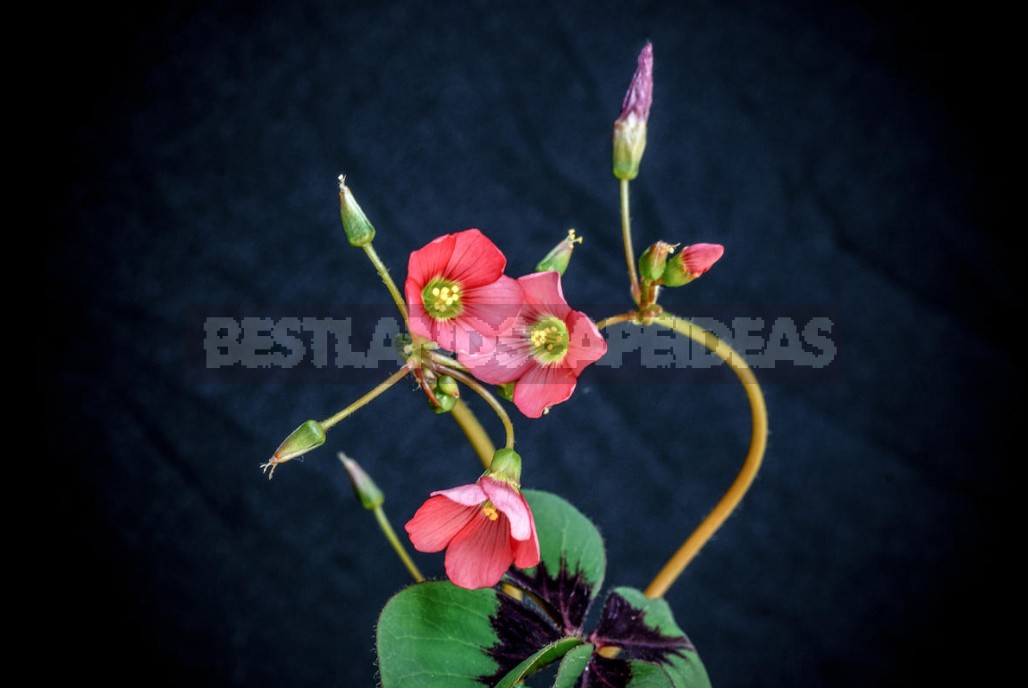
The critical winter minimum is -5°C.
It is interesting. Clover of happiness is called this cute plant in some countries, it is grown as a potted plant and given to each other on New year’s eve. If you believe the legends, on the last day of the outgoing year, this plant must change its owner to bring happiness to the one who receives it as a gift. The little messenger of good luck will delight the new owner with its imposing appearance until next autumn, if you arrange a comfortable winter in the coolest place of the house. From may, Oxalis is desirable to put in the garden.
Nuances of growing decorative non-aggressive Oxalis
Bulbs, tubers (segments of the rhizome with several buds) are planted in the spring. Deepened by 2 cm, watered. Soon the first sprouts appear. Plants are taken out to the garden only when the threat of return frosts passes (preferably in early June). Rhizomatous Oxalis that overwintered in the ground under cover (insulated with a layer of humus, dry foliage), open in the spring (remove the mulching layer).
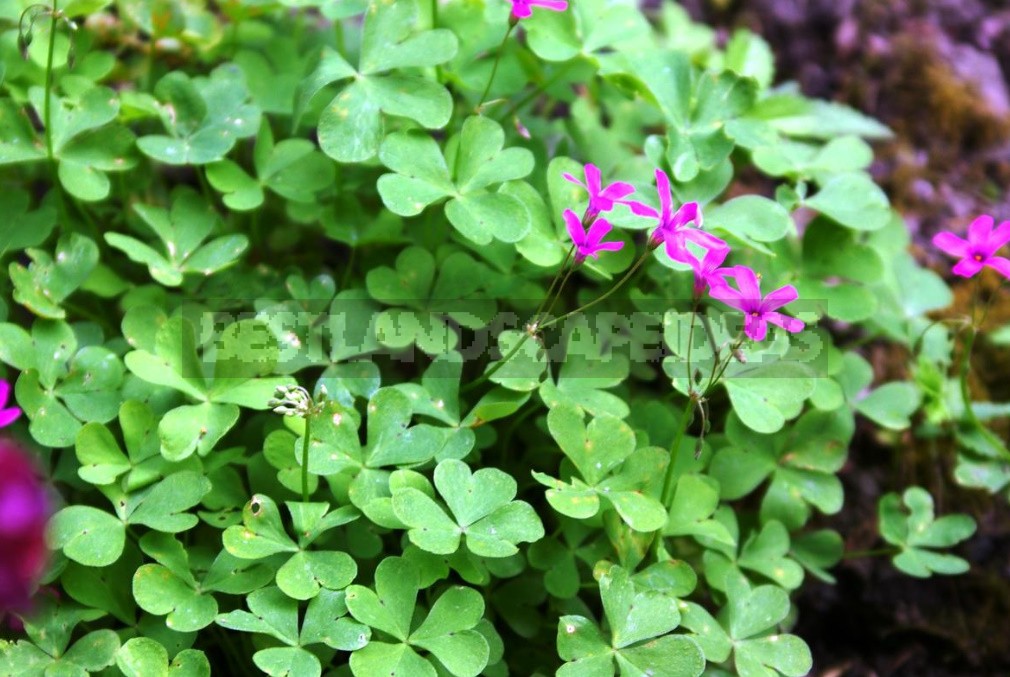
You can plant bulbs immediately in the open ground – in may, under a film shelter. Oxalis acetosella is best planted in autumn.
All season watering is regular and abundant. In autumn, bulbs of heat-loving species (Oxalis versicolor, Oxalis triangularis or Oxalis tetraphylla) are dug out of the ground and stored in a cool, dry place. More hardy (Oxalis acetosella, Oxalis enneaphylla, Oxalis adenophylla) mulch with humus, dry leaves.
Accommodation in the country
More winter-hardy species are luxurious groundcover plants that can form beautiful dense pillows that turn green even under snow. It is Oxalis with delicate white flowers that can brighten a shady corner of the garden.
More thermophilic species that do not winter in the open ground, still have time for the season to become real accents of compositions of semi-shady and shady places of the cottage.
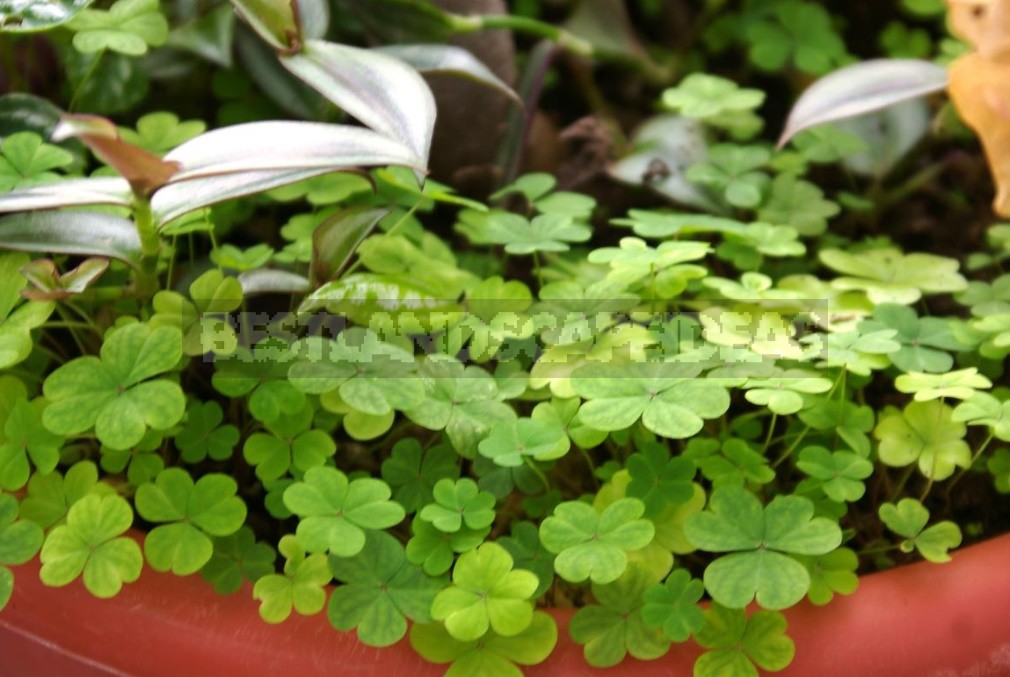
Delicate Oxalis are so charming that they are used for decorating the soil in large tubs with Fuchsia, citrus, and Bougainvillea.
Oxalis-malicious weeds
As botanists say, these are invasive, that is, introduced plants that weed in new places for them. Oxalis-weeds must be able to accurately recognize the appearance, in order not to buy them under the guise of decorative. Many cottagers have experienced all the difficulties of dealing with Oxalis-weeds. So watch carefully, remember firmly.
Oxalis dillenii
Originally from North America. Flowers are small, yellow.
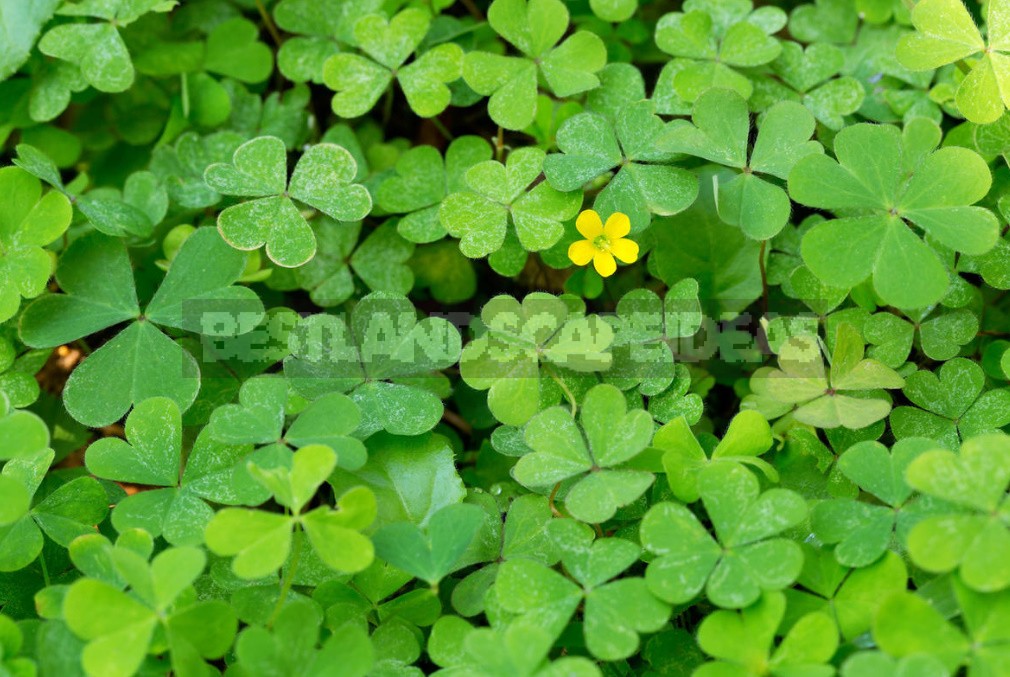
Oxalis-weeds are very similar to each other. They share common features: they are low, with small leaves and flowers.
Oxalis stricta
Native to North and Central America.
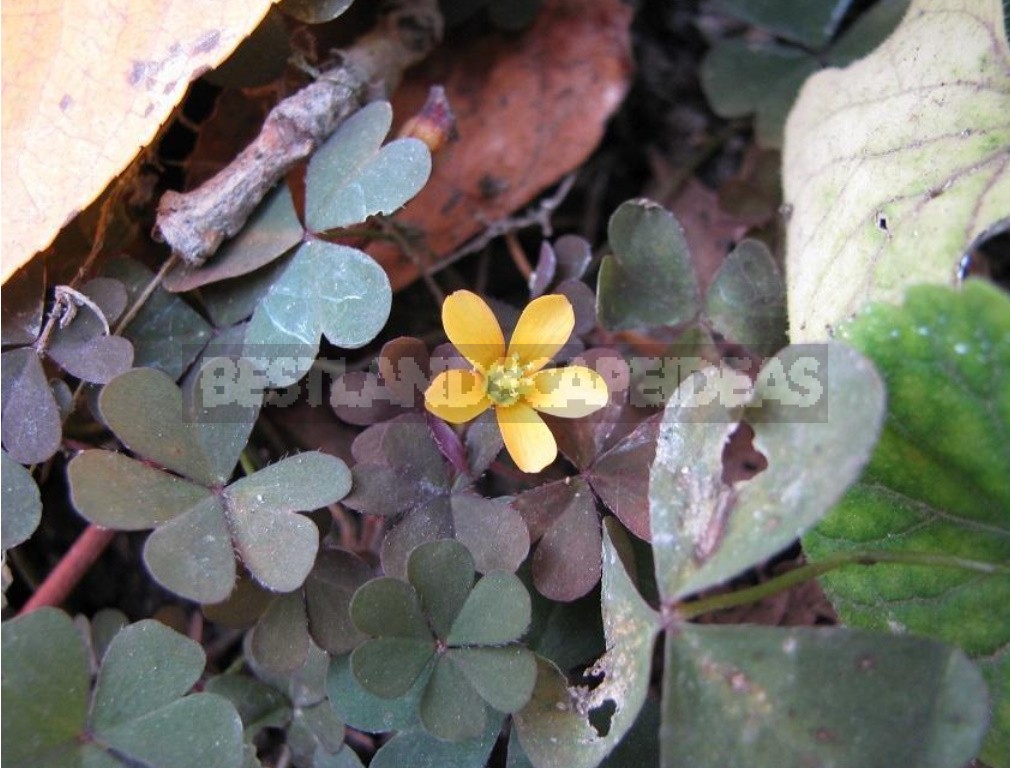
It quickly captures new territories thanks not only to a well-developed creeping rhizome, but also to the amazing ability of the seeds to fly in all directions (and at a fairly considerable distance) at the slightest touch of the matured boxes.
Oxalis corniculata
Originally from Central America. Its appearance can be misleading: well, who can assume that this lovely beauty with dark purple triplet small leaves and small yellow flowers – a malicious weed?
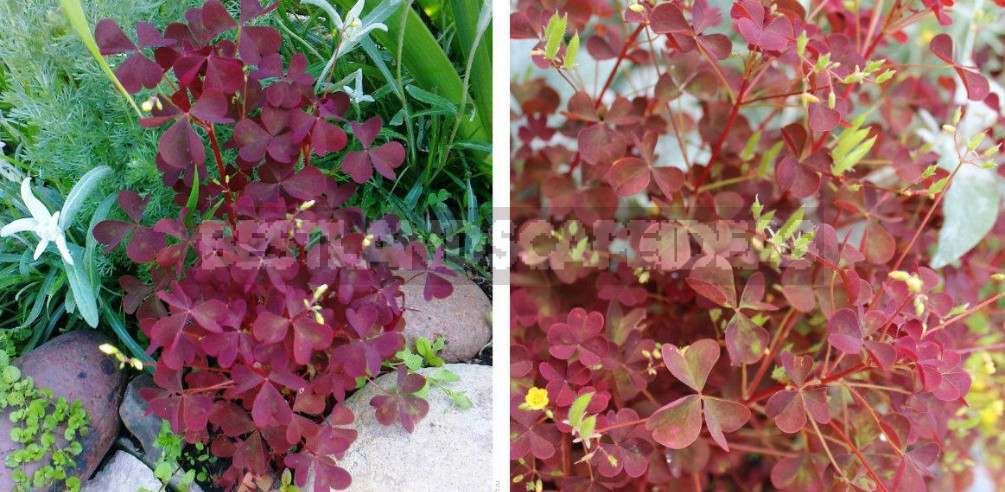
I don’t know how Oxalis corniculata got to my cottage, but now I am doomed to tedious laborious work every year when I have to choose it from Ophiopogon.
I hope that our trip to the wonderful world of such different Oxalis was not only interesting, but also useful. Now you will surely be able to distinguish a docile decorative species from an aggressive weed.
Think carefully about whether to invite a little Charmer to your site, if it is similar to the last 3 species.

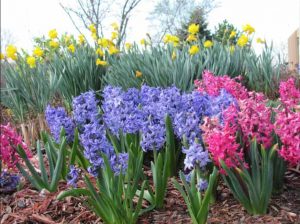

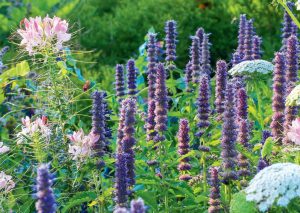
Leave a Reply